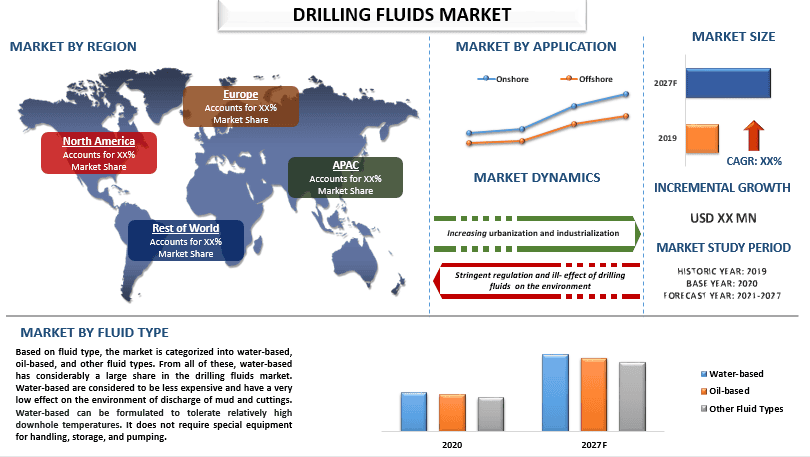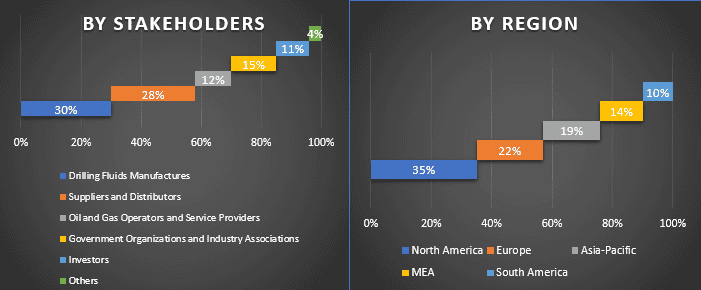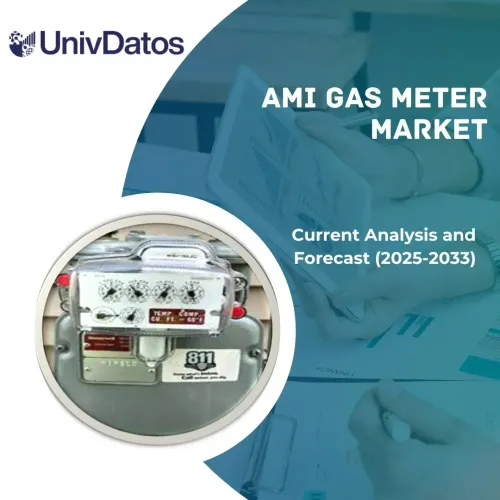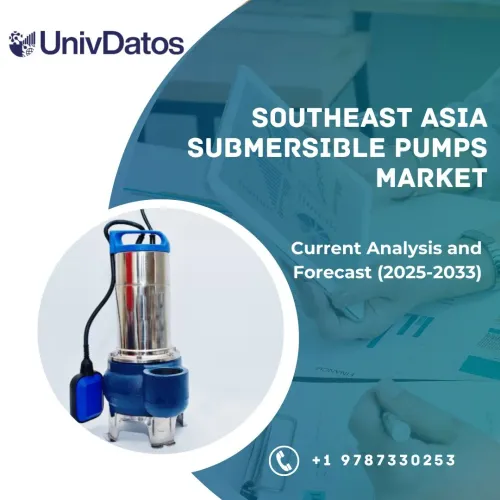- Home
- About Us
- Industry
- Services
- Reading
- Contact Us
Drilling Fluids Market: Current Analysis and Forecast (2021-2027)
Emphasis by Fluid Type (Water-Based, Oil-Based, and Other Fluid Types); Well Type [Conventional and High-Pressure High-Temperature (HPHT)]; Application (Onshore and Offshore); and Region and Country

The global drilling fluids market is likely to showcase a growth of around 4% during the forecast period. Drilling fluids are also known as drilling mud is a mixture that is heavy and viscous used to carry out the rock cuttings to the surface from the borehole in the oil and gas industry. It is also used for lubricating and cooling the drill bit and maintaining the borehole pressure. As urbanization and industrialization are increasing, it has increased the demand for energy in the various sectors. Considerably most of the industries’ energy requirements are fulfilled by the oil and gas industry, so there is an increase in exploration and production processes. For the exploration operation, there is a requirement for drilling fluids. Moreover, the exploration processes by most petroleum companies have started in offshore rigs and it is necessary to maintain the borehole pressure there, for this purpose it will require a large number of drilling fluids. Furthermore, many industries like pharmaceuticals, cosmetics, fertilizers, synthetic fragrances, plastics, and others require petroleum-based products for manufacturing different products.
Insights Presented in the Report
“Amongst fluid types, the water-based has a considerably larger share in the drilling fluids market”
Based on fluid type, the market is categorized into water-based, oil-based, and other fluid types. Among these, water-based has considerably larger share in the drilling fluids market. Water-based are considered to be less expensive and have a very low effect on the environment of discharge of mud and cuttings. Water-based can be formulated to tolerate relatively high downhole temperatures. It does not require special equipment for handling, storage, and pumping. Additionally, it is best for studying the geology of the well which has been drilled. Furthermore, government policies and industry associations are also providing opportunities for exploration and production. In 2022, Chevron Corporation announced it has sanctioned the Ballymore project in the deepwater U.S. Gulf of Mexico. The project, with a design capacity of 75,000 barrels of crude oil per day, will be developed as a three-mile subsea tieback to the existing Chevron-operated Blind Faith platform.
“Amongst well types, the high-pressure high-temperature (HPHT) has a prominent share in the drilling fluids market”
Based on well type, the market is categorized into conventional and HPHT. Among both, HPHT has a prominent share in the drilling fluids market. HPHT wells have usually high pressure or high temperature or both. Thus, to maintain the well pressure and temperature it will be required large amounts of drilling fluids while drilling the well.
“Amongst application, the onshore has a prominent share in the drilling fluids market”
Based on application, the market is categorized into onshore and offshore. Among both, onshore has a prominent share in the drilling fluids markets. The production and set-up onshore take less time and it is more cost-effective than offshore. Furthermore, the demand for energy and petroleum products is increasing therefore, there is a need for increasing the exploration processes on the onshore reservoir, thereby it will increase the demand for drilling fluids.
“North America accounted for a prominent share in the global drilling fluids market”
The North American region held a considerable position in the market owing to a large number of oil & gas reservoirs and growing exploration & production activities mainly in the US and Canada. In the last several years the oil & gas production activity in countries like the US has increased significantly owing to a large number of fracturing activities in the country and huge investments in technology during the early stages of demand. Further, regional demand for energy and various petroleum products is increasing due to urbanization and the growing population. Improving per-capita income and disposable income is encouraging consumers to purchase large numbers of products, thereby increasing the demand for oil & gas-based raw materials. In addition, the governments in several countries are helping the industry in expansion by providing subsidies and creating policies, for instance, US Intangible Drilling Costs Deduction (26 U.S. Code § 263. Active) provision. This provision allows companies to deduct a majority of the costs incurred from drilling new wells domestically. In its analysis of President Trump’s Fiscal Year 2017 Budget Proposal, the Joint Committee on Taxation (JCT) estimated that eliminating tax breaks for intangible drilling costs would generate $1.59 billion in revenue in 2017 or $13 billion in the next ten years.
Reasons to buy this report:
- The study includes market sizing and forecasting analysis validated by authenticated key industry experts
- The report presents a quick review of overall industry performance at one glance
- The report covers an in-depth analysis of prominent industry peers with a primary focus on key business financials, product portfolio, expansion strategies, and recent developments
- Detailed examination of drivers, restraints, key trends, and opportunities prevailing in the industry
- The study comprehensively covers the market across different segments
- Deep dive country-level analysis of the industry
Customization Options:
The global drilling fluids market can further be customized as per the requirement or any other market segment. Besides this, UMI understands that you may have your own business needs, hence feel free to connect with us to get a report that completely suits your requirements.
Table of Content
Research Methodology for Drilling Fluids Market Analysis (2019-2027)
Analyzing the historical market, estimating the current market, and forecasting the future market of drilling fluids, three major steps are undertaken to create and analyze its adoption across the globe. Exhaustive secondary research was conducted to collect the historical market numbers and estimate the current market size. Secondly, to validate these insights, numerous findings and assumptions were taken into consideration. Moreover, exhaustive primary interviews were also conducted, with industry experts across the value chain of the drilling fluids industry. Post assumption and validation of market numbers through primary interviews, we employed a bottom-up approach to forecast the complete market size. Thereafter, market breakdown and data triangulation methods were adopted to estimate and analyze the market size of segments and sub-segments of the industry pertains to. Detailed methodology is explained below:
Analysis of Historical Market Size
Step 1: In-Depth Study of Secondary Sources:
Detail secondary study was conducted to obtain the historical market size of drilling fluids through company internal sources such as annual reports & financial statements, performance presentations, press releases, etc., and external sources including journals, news & articles, government publications, competitor publications, sector reports, third-party database, and other credible publications.
Step 2: Market Segmentation:
After obtaining the historical market size of the drilling fluids market, we conducted a detailed secondary analysis to gather current market insights and share for different segments & sub-segments for major regions. The major segment is included in the report by fluid type, well type, and application. Further regional and country-level analyses were conducted to evaluate the overall adoption of drilling fluid globally.
Step 3: Factor Analysis:
After acquiring the historical market size of different segments and sub-segments, we conducted a detailed factor analysis to estimate the current market size of drilling fluids. Further, we conducted factor analysis using dependent and independent variables such as increasing demand for petroleum products from various industries like electricity, transportation, pharmaceuticals, and others. A thorough analysis was conducted for demand and supply-side scenarios considering an increasing investment, top partnerships, mergers and acquisitions, business expansion, and product launches in the drilling fluids industry.
Current Market Size Estimate & Forecast
Current Market Sizing: Based on actionable insights from the above 3 steps, we arrived at the current market size, key players in the global drilling fluids market, and market shares of each segment. All the required percentage shares split, and market breakdowns were determined using the above-mentioned secondary approach and were verified through primary interviews.
Estimation & Forecasting: For market estimation and forecast, weights were assigned to different factors including drivers & trends, restraints, and opportunities available for the stakeholders. After analyzing these factors, relevant forecasting techniques i.e., the bottom-up approach were applied to arrive at the market forecast to 2027 for different segments and subsegments across the major regions globally. The research methodology adopted to estimate the market size encompasses:
- The industry’s market size, in terms of value (US$) and the adoption rate of drilling fluids across the major markets
- All percentage shares, splits, and breakdowns of market segments and sub-segments
- Key players in the drilling fluids market. Also, the growth strategies adopted by these players to compete in the fast-growing market
Market Size and Share Validation
Primary Research: In-depth interviews were conducted with the Key Opinion Leaders (KOLs) including Top Level Executives (CXO/VPs, Sales Head, Marketing Head, Operational Head, Regional Head, Country Head, etc.) across major regions. Primary research findings were then summarized, and statistical analysis was performed to prove the stated hypothesis. Inputs from primary research were consolidated with secondary findings, hence turning information into actionable insights.
Split of Primary Participants by Stakeholders and Regions

Market Engineering
The data triangulation technique was employed to complete the overall market estimation and to arrive at precise statistical numbers for each segment and sub-segment of the global drilling fluids market. Data was split into several segments & sub-segments post studying various parameters and trends in the area of application, fluid type, and well type.
The main objective of the drilling fluids market study
The current & future market trends of global drilling fluids were pinpointed in the study. Investors can gain strategic insights to base their discretion for investments on the qualitative and quantitative analysis performed in the study. Current and future market trends would determine the overall attractiveness of the market at a country level, providing a platform for the industrial participant to exploit the untapped market to benefit as a first-mover advantage. Other quantitative goals of the studies include:
- Analyze the current and forecast market size of drilling fluids in terms of value (US$). Also, analyze the current and forecast market size of different segments and sub-segments
- Segments in the study include the area of fluid type, well type, and application
- Defined analysis of the regulatory framework for the drilling fluids industry
- Analyze the value chain involved with the presence of various intermediaries, along with analyzing customer and competitor behaviors of the industry
- Analyze the current and forecast market size of drilling fluids for the major countries
- Major regions/countries analyzed in the report include North America (United States, Canada, and the Rest of North America), Europe (Germany, France, United Kingdom, Italy, Spain, and Rest of Europe), Asia-Pacific (China, Japan, India, Australia, and Rest of APAC), Middle East and Africa (MEA) (Saudi Arabia, UAE, and Rest of MEA), South America (Brazil, Argentina, and Rest of South America)
- Company profiles of the drilling fluids market players and the growth strategies adopted by them to sustain the growing market
- Deep dive country-level analysis of the industry
Related Reports
Customers who bought this item also bought










